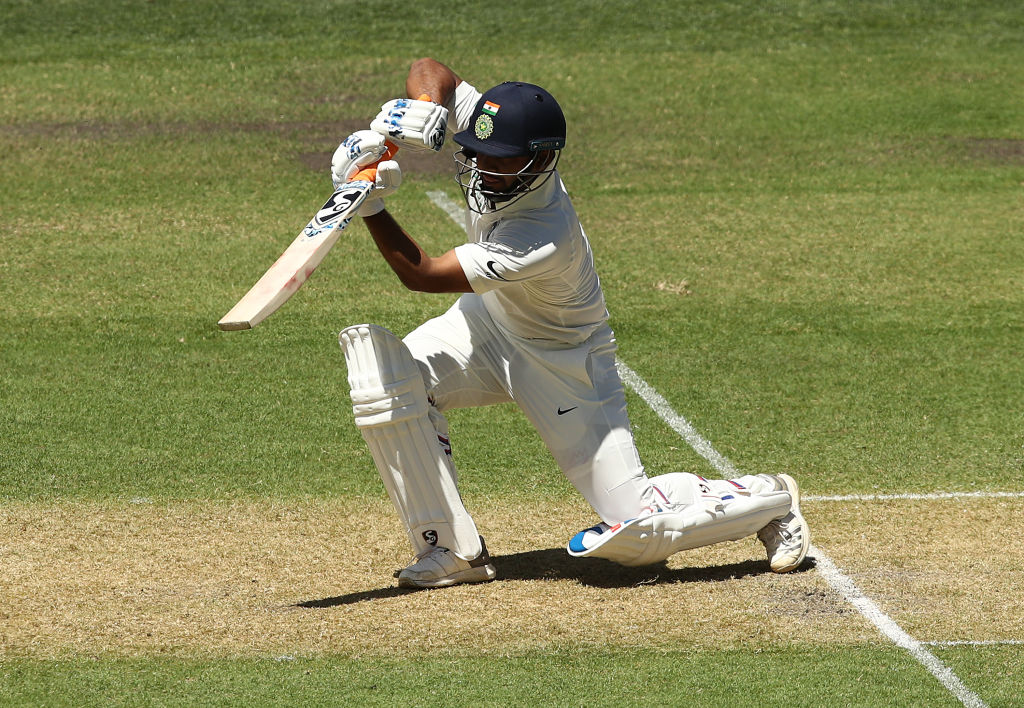India vs Australia | Takeaways: Rishabh Pant’s inability to bat with tail and Kohli’s majestic innings

Getty
If you have watched the entire day’s action and there is a very little chance that you wouldn’t have been moved by the ebbs and flows of the game. While the day would be remembered for Virat Kohli’s supreme Perth dominance, Rishabh Pant’s inability to bat with the tail also came to the fore.
Batting with tail-enders is an art, Pant. Master it.
Playing with the tail is an art not mastered by many. Remember, VVS Laxman’s stand with Ishant Sharma against Australia in 2010, or a crucial 70-run partnership with Zaheer Khan to help India secure their first Test win in South Africa. Or you can think of Michael Hussey, who had put together 93 runs with Stuart McGill to give Australia the first innings lead against West Indies or that 107-run partnership with Glenn McGrath for the 10th wicket against South Africa, you will surely be surprised at their audacity. While these are few examples, a Younis Khan, or an Allan Border was also celebrated thanks to their fine art of rotating the strike and taking the team to a good total from the most improbable of situations.
Certainly, that is the thing a team definitely wants from a lower middle-order batsman and Rishabh Pant should have known that. Batting in at No. 7, it was Pant’s responsibility to guide the team to a good total by rotating the strike judicially. However, what he did was the complete opposite. Umesh Yadav, who averages 11.08, joins the Indian tail in which Mohammed Shami (11.39), Ishant Sharma (7.92) and Jasprit Bumrah (1.42) are as terrible as it could get.
So, instead of judging the runs properly, he took a single on the second delivery of a Pat Cummins over, exposing Umesh Yadav to face the tearaway quick for the remaining deliveries. Nathan Lyon was smashed for a couple of big hits by the Delhi keeper, but Pant again left Yadav to face another over. Although Yadav did well to play out some deliveries to give Pant a chance to open his arms, the latter kept on giving him a strike.
Why this Kohli century is terrific
Virat Kohli has 25 Test centuries, among which six are in Australia. This speaks how much he loves returning to the country, but in hindsight, his sixth one was much better than the previous five. Be it the Adelaide 2011 century, or the twin in 2014, or that SCG 2014 masterclass, Kohli had the comfort of other batsmen with him, but here he had to battle alone. Not just that, the sheer audacity to not give a chance to the bowlers made this innings special.
After being strangled by Pat Cummins in the first two overs, he made the most of Josh Hazlewood’s over and then later multiple bursts from Cummins. Lyon also played to his mind with turn but Kohli hung on, waiting for the error from the bowler. Against the
After Kohli completed the century, Australia made a tactical withdrawal as they tried to play to his patience by bowling wide outside off. But the Indian skipper was such resolute that he made sure the line was negated, and with that, he scored one of the finest centuries of this year. As Sachin Tendulkar tweeted, this one was surely one of his finest.
Peter Handscomb finds new ways to get out
Peter Handscomb has always been touted as a fine batsman in Australian circles because of his superb defence. His Ranchi resistance could well be remembered as one of the finest backs-to-the-wall innings in the difficult conditions, during which he spent as many as 210 overs on the field, absorbing a mountain of pressure. However, his spot was never assured and when experts question his tactics against James Anderson, he was eventually dropped from the team at the end of last year's Ashes Test in Adelaide. He did answer it some way or other, but the struggle has once again made a comeback in this Test series.
Generally, Handscomb’s high backlift allows him to stay back in the crease and put him in an ideal position to play hook shots confidently and then his weight transfer allows him to play horizontal bat shots, but this series is entirely different. In the Adelaide Test, he fell prey to a classic seamer from Mohammed Shami, who was pitching the ball up, but the one that dismissed Handscomb was a short one. He failed to counter short balls in this Test as well, which forced Shane Warne to ask for his head on Twitter.
